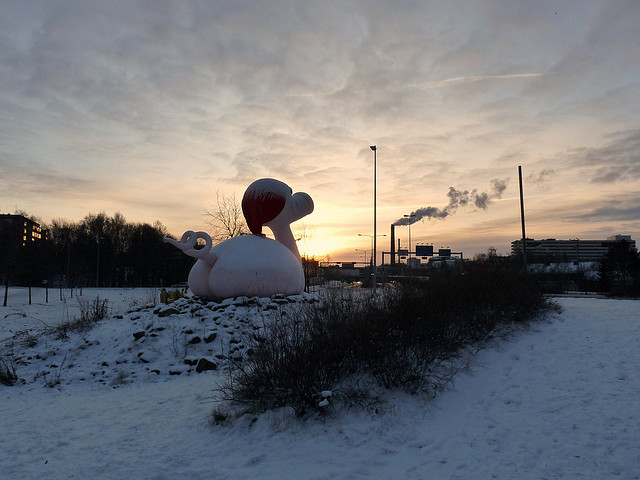With the spring rain comes the time for the Juniper to flower, yes? From a distance it looks as if the blooms are large and orange. Yet wait a minute. Doesn’t the juniper produce cones and nuts? On closer inspection, unease turns to horror. Large, alien looking, carroty gelatinous tentacles seem to have sprung up all over the tree. This is no precursor of alien invasion, however. This is
cedar apple rust. It is in fact a fungus.
Cedar
apple rust? A strange name for a fungus which affects the juniper, you might think. Yet cedar apple rust is so names because it is a disease which requires two hosts to complete its life cycle. To begin with it will spend the winter as a purple colored gall which looks a little like a brain (
see below) on the branches of
Juniperus virginiana.
When spring comes the orange telial horns (structures produced by rust fungi as part of the reproductive cycle) begin to spike out of the gall, gummy and viscous looking – something that you really would wish to avoid touching! These horns produce spores which blow on to the leaves and fruit of nearby apple trees.
It really does look, at the point the telial horns emerge, as if it has travelled through space, intent on colonising a new world. It doesn't just appear in isolated clumps either. Sometimes it looks like a fool scale invasion is underway.
Yet when the spores germinate later in the year this new infection on the apple tree will produce horn-bearing spores too. The spores are taken up by the wind and some will land on the juniper. Then, the cycle of infection will begin again.
Although the glutinous orange mass looks deadly it does not kill either the juniper or its secondary hosts. However, it will infect apples and will also defoliate the trees so whenever farmers discover it, they will naturally attempt to eradicate it.
That is a difficult job. The plant pathogenic fungus is from an order known as
Gymnosporangium and there are over 50 species in the genus which attack junipers. This species produces a gall first of all, which is about the size of a golfball – easy enough to spot if you have sharp eye. Others, however, grow the telial horns directly from the bark of the tree.
So, the way that people in some areas have responded to the threat to their apples (not to mention pears and quinces) has been to cut down all the junipers and to ban the planting of any more in the region. The Ozarks region in the US states of Missouri and Arkansas put in legislation in the 1920s.
They were not the first to fear and seek to eradicate the cedar apple rust – or species in its genus. Roman priests would celebrate the feast of the god of grain, Robigus, on April 25 each year. This would involve the sacrifice of a red dog in the hopes then that Robigus would stop the crops from being affected by the fungus.
Such radical measures are not taken these days (at least, it is hoped) but in the twenty first century growing disease-resistant cultivars is considered the most likely remedy. Regrettably a good number of the commercially significant apple clones are prone to the disease. The cedar apple rust will continue to make the hearts of fruit farmers fall for a number of years to come, it seems.























































